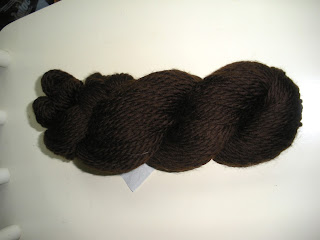So I started another hat. Now you know why I have so many hat projects.
I actually already have a hat on the needles, but it is a complicated mosaic pattern on yarn that needs good tension (read: must be sitting down) on double pointed needles (read: doesn't travel well). I'll try to post something about that project sometime soon.
But today, I am going to talk about my new brioche hat.
For my birthday, my boss gave me a gift card to my LYS. Dangerous, I know, tempting me into the shop when I have so much stash to use already. But I was good. I bought two bulky-weight skeins of yarn, one solid, one variegated. They were super-soft (merino wool) and I was thinking that I needed a winter hat for myself, so I can stop borrowing my husband's.
 |
| Cascade 128 Superwash |
I don't use the patterns in my books nearly as much as I should. I have a bunch of them that I have bought or that have been gifts (that's actually most of them). I love my stitch dictionaries, but I rarely follow patterns too closely. And so many of the patterns I have are colorwork or need specific yarns: I would rather use the yarns I have.
That said, I had never tried brioche before, and I had heard that it was really hard. Having done it, it is not too bad, but takes a bit of time to get the hang of it and figure out what is going on. A youtube video helped too: trying to describe it is very difficult. But, I will put in my two cents: maybe it will help someone who thinks like I do.
This is the pattern in the round, which is easier (I found):
Set up (color 1): knit 1. *put yarn to front and slip 1 purlwise. knit 1 without putting yarn to back to make a yarn-over. repeat from *.
Round 1 (color 2): put yarn to from and *slip 1 purlwise (this will be color 1). yarn-over. purl two together (1 yarn-over of color 1 and one stitch of color 2). repeat from *.
Round 2 (color 1): knit two together (1 yarn-over of color 2 and one stitch of color 1). *put yarn to front and slip 1 purlwise (this will be color 2). knit two together without putting yarn to back to make a yarn-over. repeat from *.
Repeat rounds 1 and 2.
To do it flat, do a four row repeat: round 1 (color 2), round 2 (color 1), turn, round 2 (color 2), round 1 (color 1).
My hat looks like this so far:
 |
| Outside |
 |
| Inside |
The material is really stretchy and thick, and I love how the colors look.
Depending on how the crown goes, I might submit this one to the state fair.








